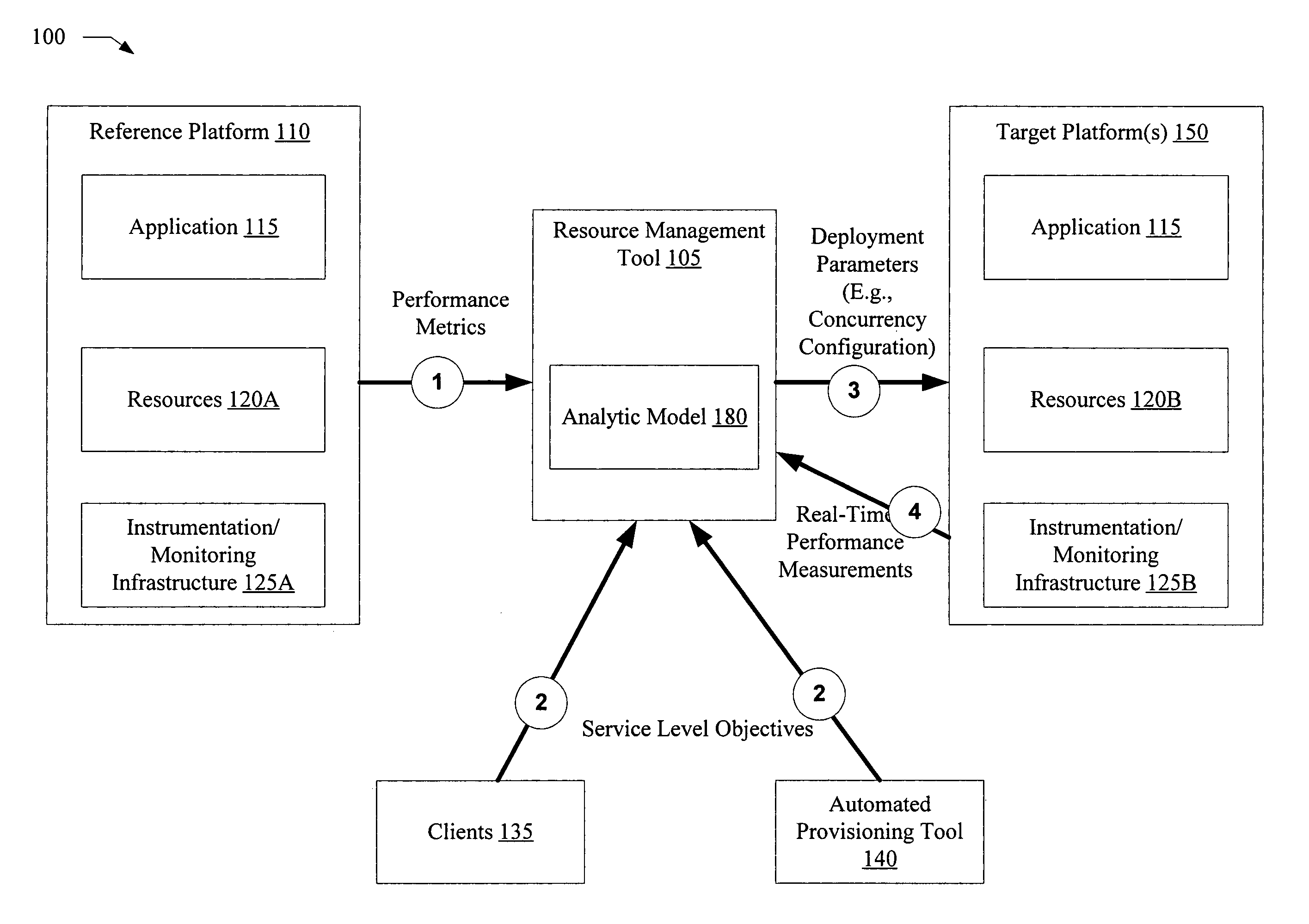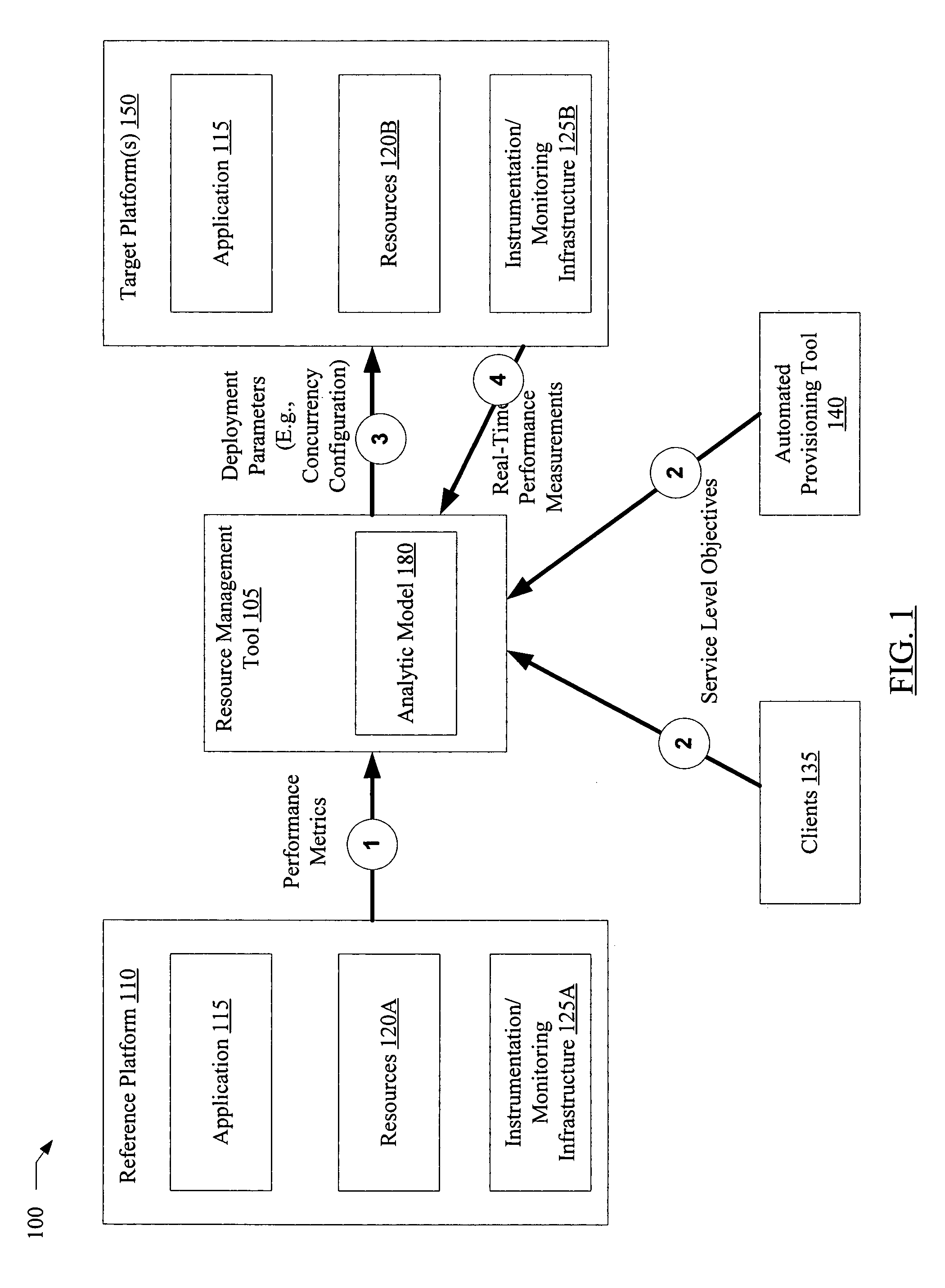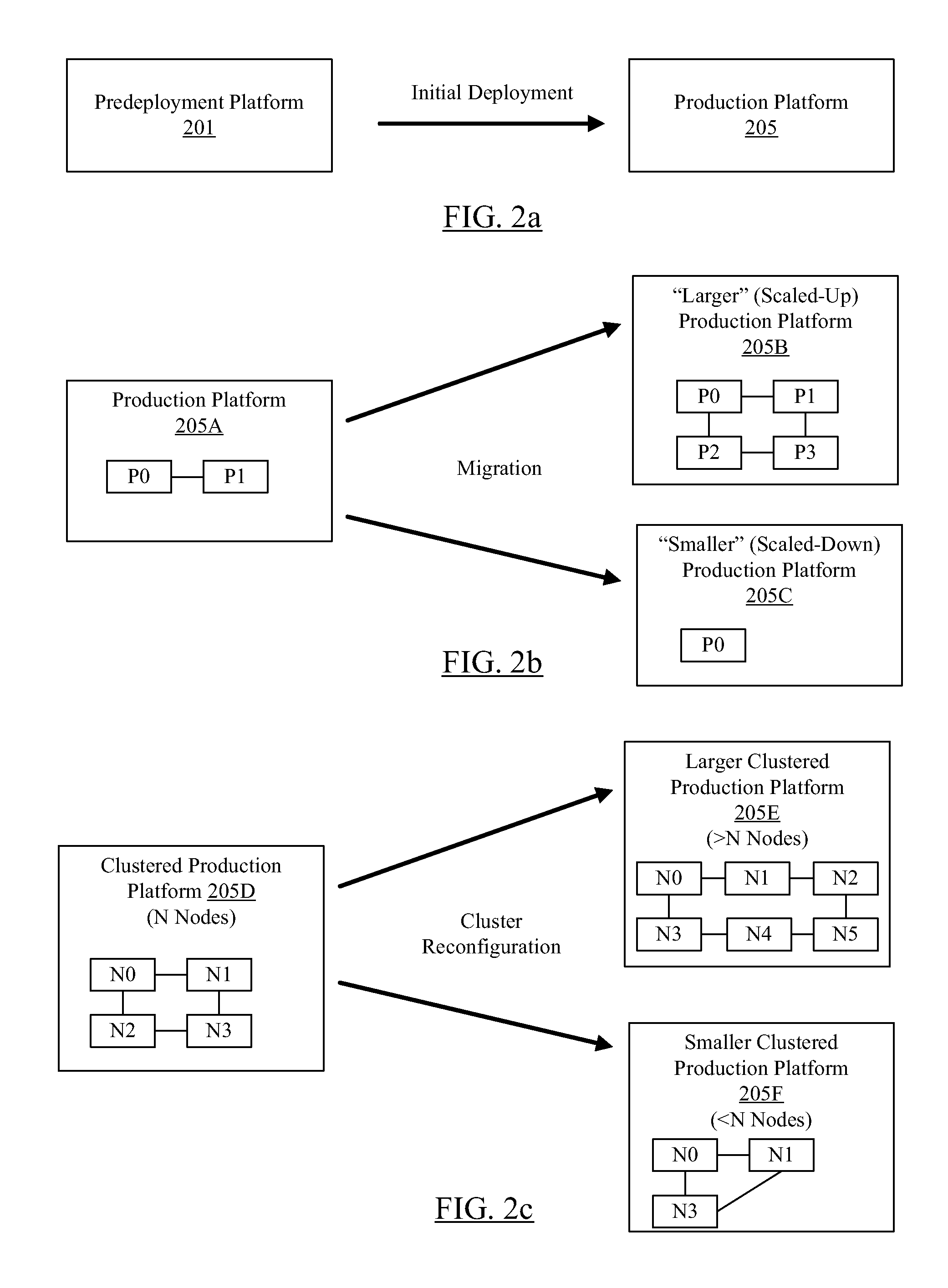Automated concurrency configuration of multi-threaded programs
a multi-threaded program and concurrency configuration technology, applied in the field of computer systems, can solve the problems of complex tuning of applications for performance, large processing overhead of applications, and long known non-trivial and expensive tasks, and achieve the effect of accurately reflecting production workloads and increasing workload levels
- Summary
- Abstract
- Description
- Claims
- Application Information
AI Technical Summary
Benefits of technology
Problems solved by technology
Method used
Image
Examples
Embodiment Construction
[0018]FIG. 1 is a block diagram illustrating a system 100 according to one embodiment. As shown, system 100 includes a resource management tool 105, a reference platform 110, and one or more target platforms 150. Reference platform 110 and target platform 150 may each comprise one or more computer hosts comprising a respective set of resources 120 (e.g., resources 120A at reference platform 110 and resources 120B at target platform 150). A variety of different types of physical and logical resources may be available at each platform, such as one or more processors or CPUs (Central Processing Units), memory, network bandwidth, I / O devices such as disks, etc. In some embodiments, reference platform 110 and target platform 150 may also comprise a respective instrumentation / monitoring infrastructure 125 (e.g., infrastructure 125A at reference platform 110 and infrastructure 125B at target platform 150), which may be used, for example, to determine resource consumption for processing ser...
PUM
 Login to View More
Login to View More Abstract
Description
Claims
Application Information
 Login to View More
Login to View More - R&D
- Intellectual Property
- Life Sciences
- Materials
- Tech Scout
- Unparalleled Data Quality
- Higher Quality Content
- 60% Fewer Hallucinations
Browse by: Latest US Patents, China's latest patents, Technical Efficacy Thesaurus, Application Domain, Technology Topic, Popular Technical Reports.
© 2025 PatSnap. All rights reserved.Legal|Privacy policy|Modern Slavery Act Transparency Statement|Sitemap|About US| Contact US: help@patsnap.com



